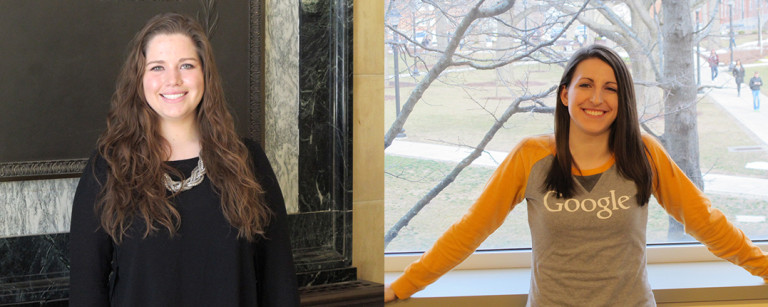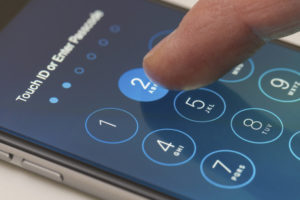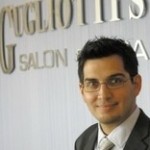
The top two UConn undergraduate interns from 2015 are both from the school of engineering, according to the Center for Career Development.
Meredith Rittman, biomedical engineering (‘16) spent her summer with NASA, and Ashley Dumaine, computer science and engineering (‘16) interned with Google. Rittman was named the top intern of the year and Dumaine the runner up.
During her internship at NASA, Rittman studied the effects of deep space radiation on the effectiveness of medication. Unlike many interns, she was starting a new project.
“A lot of interns came on board and were helping research that was already happening,” Rittman said. “[My project] was to start something new. My mentor was the one who identified that he wanted me to work with pharmaceutical efficacy in deep space radiation.”
Working with her NASA mentor and co-mentor, Rittman first did research into what information existed on the topic, since her project was a new idea.
“We’d have weekly meetings to review what I’d come up with during the week. I’d also attend all the branch presentations. It was really like I was a member of the branch. They didn’t treat me like an intern, they treated me like another member of the team,” Rittman said.
Rittman eventually presented her solution to the branch chief and deputy branch chief. She suggested creating a small satellite- about 11 inches by 4 inches by 4 inches- to send pharmaceuticals into deep space, to examine how radiation affects the drugs.
“Basically, will it work, how well will it work and how long will it last,” she said.
After her presentation and some questions, Rittman said the NASA officials agreed with the potential of her solution. As a result of her work at NASA, she is spending this semester studying how effective freeze drying pharmaceuticals can be for long term space travel, a different approach to the same problem her internship addressed.
Dumaine’s Google internship took her to New York City, but she first had to interview for the position.
“The way the internships work, you actually go through the normal interview questions, you pass the interviews and then you get host matching, where you get matched with a project,” Dumaine said. “I was working on the site reliability engineering team.”
Dumaine was eventually placed on the technical infrastructure team and later worked on Google’s Borg system, which deals with large scale cluster management, which is a group of linked servers and other resources used for shared tasks. Her project was to create a program that moved relatively poor performing computer tasks onto a different machine, which would allow the Borg jobs to work more effectively.
“That’s mostly what cyber reliability is about, performing stuff faster and in a more reliable manner,” she said.
Her main project in New York was at Google’s Manhattan Complex, which encompasses a city block.
In addition to her primary project, she also participated in a 2-week code sprint at Google’s Mountain View, California headquarters.
Both Dumaine and Rittman said that their internships affected their future careers, though in very different ways.
Dumaine said that she has a job lined up for after graduation at a small company in Norwalk called Datto. She said the difference in size between Datto and Google was intentional.
“I kind of want to work at a smaller company after working at such a big company,” she said. “It was a little bit overwhelming at first.
“They have around 500 employees. It’s significantly smaller but I really like the company,” Dumaine said.
Rittman was interested in orthopedic medical devices as a career path. That changed after her internship.
“My internship at NASA allowed me to see biomedical engineering applied in a way I had never seen before, and made me want to apply biomedical engineering principles to the space environment.” she said.
Published: March 14, 2016

 Martin Gugliotti (B.S. Mechanical Engineering/Materials Engineering, ‘01) was named one of 42 winners of the 2014 Hartford Business Journal
Martin Gugliotti (B.S. Mechanical Engineering/Materials Engineering, ‘01) was named one of 42 winners of the 2014 Hartford Business Journal 
